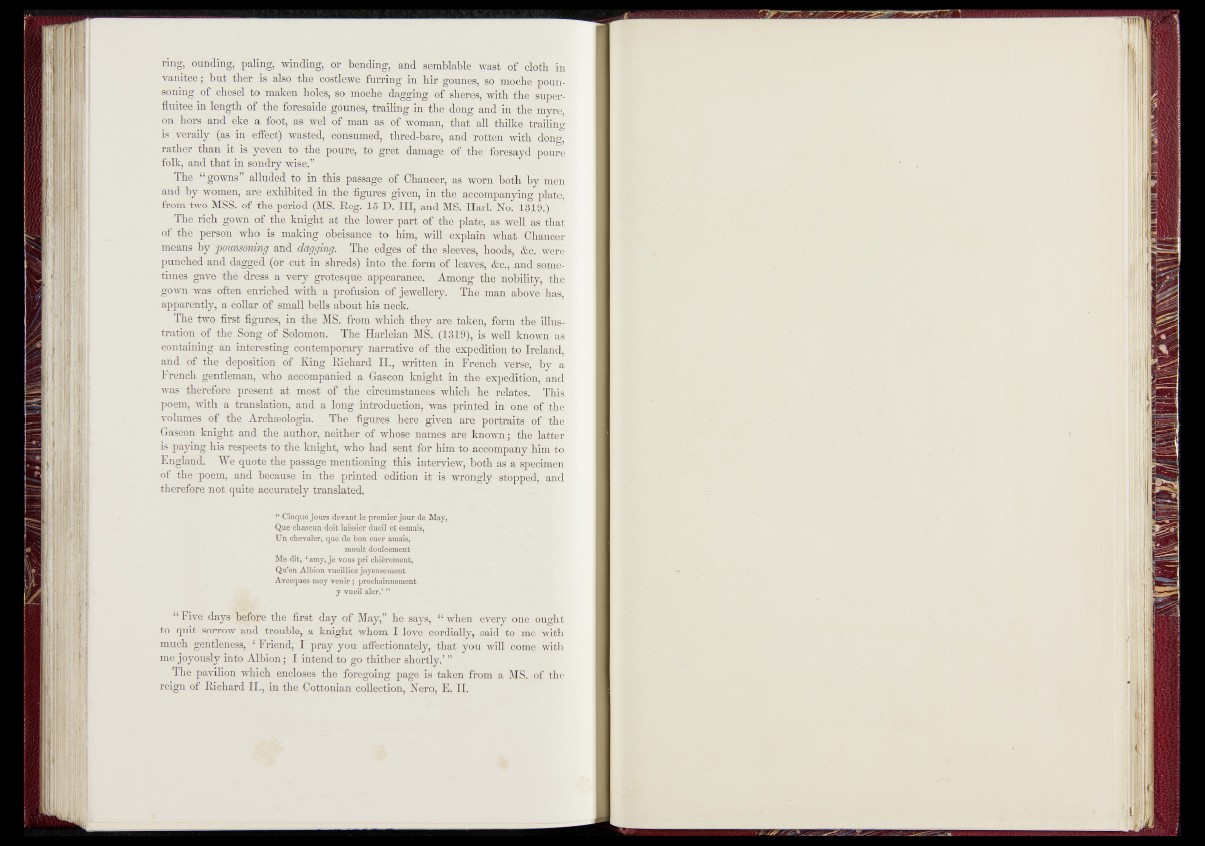
ring,1 bunding, paling ^npding, or bending, and VemlMile
vanitee ;J fe t ther is also/tbp^ çosticwç,,'furritig in liij^ ^m ^ ^ ^ ^ fM^pnnTu
cböseljJ^fe a^ ^Qi^&° moche dagging mW iM p ;.,■_
finite; in length of the foresaidó goiine^' 'trailing in'thé tiiq^fijfe.
op hqmdand.'|ke%a thaï all tM ^ ^ S S 'h g
is veraily (as in effert) ^v^Mfeÿp^H^ i^ ^ ^ h a r ^8 'and motten ydthf^^g,
rather, than it tbfcipqpï?, to gfeff Hamage of
folk, and jithafiSi' sondiy >vtiseâ’ '
alluded to ij^this passage ^ iO p jje èr, as worn b / h
and Tm ^ b rneh, -are exhibited* in the
from twojMSSr ^ the period (llS .^ eMiM ). Ill, and ^>H!arl,
The part .of the bË f l'nS well as that
of fh^^^ofi^whö -is making obeisance do himf will explain y ^ ^ ^M k c e r
means by pounsming and dogging. The .edges of the 'MeeyeSj>oods,^^feen
pnnnbedWd digged (or cut injtiueds)linto the form of leases! M ^ É B B I p.
Tbé^dreâs a very grotesque appearance,
gown'was,often enriched with a profusion of jeweüégd, T^^malp'^^E^l/has,
apparentlyj a collar of small bells about his nèck.
The two first figures, in the MS. from which they are taken;',,fbrm | | 1 H ^
tratidp. of the ^m g of Solomon. e p e Harleian jyell É S i h
containing an mteroeting cpntemporary nafratiVe :df|th<' iC^óc^t^ntii-Jreldiifl,
and nfr.the deposition of King .Richard IL, •*
French gentleman, who accompanied a- Gaiseon kniglft in’ƒthokè]ie?htiqKl^iil
was therefore present at most ofrthe .circumstahces»\vlflY:h 1>A. j BEKh i^
poem, with a translation, and a long introduction^"was printed i p . fà
volumes of the Arehæologia. dFhe figures hpre<kgiyent^are portraits
Gascqu-knight and the author, neither
is paying his respects to the knight, who had sentifor hiraHO to’
England. We quote the passage mentioning this interview* both j}À\
of the~poém, and because in the printëdwodition^*it'is'5wuöh‘!>ly ^fij^^feand
therefore ,not quite accurately translated.
“ Cinque jours devant le premier jour de May, •
. Que chascun doit laissier dueil et esmais,
Un ebevaler, que de bon euer amais,
moult doulcement
Me dit, ‘ amy, je vous pri cMèrement,
Qu’en Albion vneilliez joyeusement •
Avecques moy venir ; proebainnement
y vueil aler,’ ”
“Fivp days before the first day of May,” he says, “ when every oke^pghft
to quit sorrow and trouble, a knight whom I love cordially, said to mp; vtdth
much gentleness, i FriendpI pray you affectionately, that you will- come with
me joyously into Albion ; I intend to go thither shortly.’” "
The pavilion which encloses the foregoing page is taken from a MS,, of the
reign of Richard II., in the Cottonian collection, Nero, E. II.